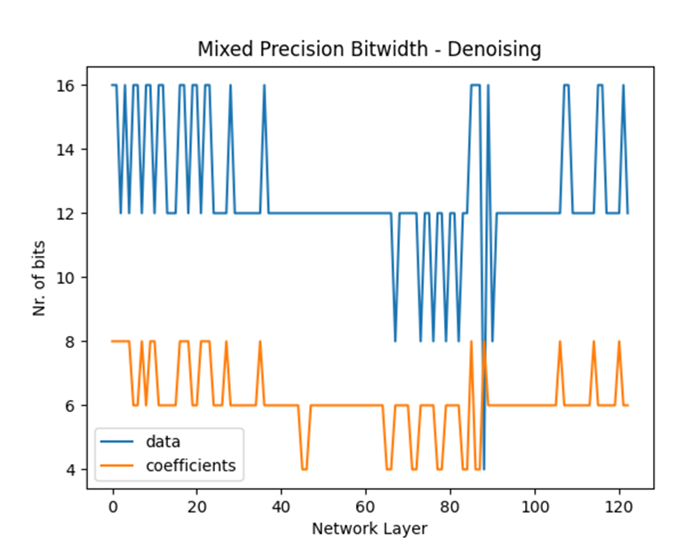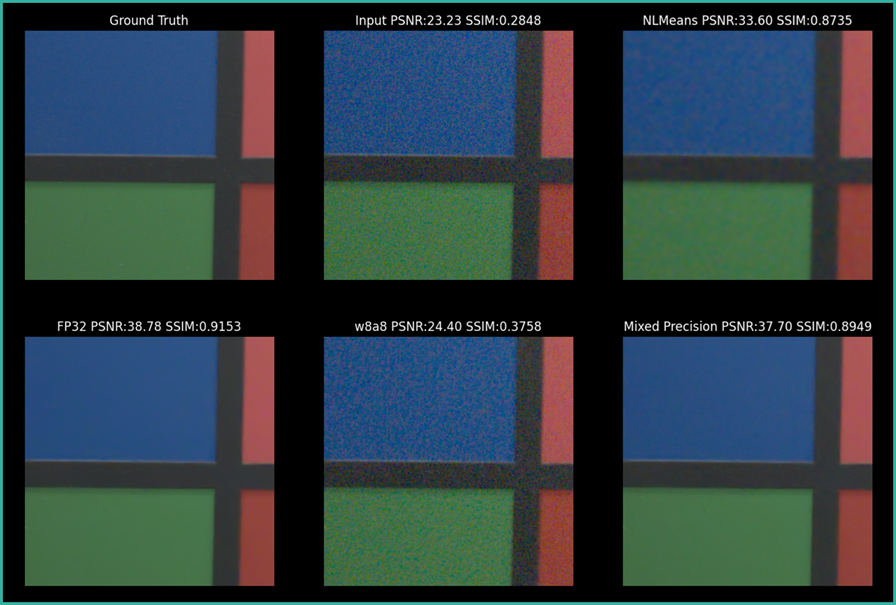Portfolio
Neural Network accelerator
Denoising network
Because one of Easics’ customers is a company specialized in camera’s and needs ISP capabilities, I also focused on the development of a denoising network. Because quantization of a PMRID network resulted in suboptimal denoising, I developed a mixed-precision algorithm that reduced the bitwidth across the layers. For the activations, we managed to do most of the computations in 12-bit, while some of the middle layers are processed in 8- or 4-bit. For the weights, most layers are computed in 6-bit, some even in 4-bit.



With this technique, the memory footprint and the related power consumption is reduced by almost a factor of 4 while retaining the quality of a FP32 network. To summarize, run the network at INT8 memory footprint, speed and power consumption but with FP32 quality.
Technical images
In the next image, we put synthetic noise on a technical image (PSNR of 23.23 and SSIM of 0.2848). An optimized NLMeans algorithms is capabled to increase the PSNR to 33.60, while the FP32 implementation of PMRID boost the PSNR to 38.78 and SSIM to 0.9153. The 8-bit quantized network (w8a8) only increases the quality a little bit, while the mixed precision algorithm surpasses the NLMeans implementation, almost at the same quality level of the FP32 implementation

Real images
The denoising network not only performs good on syntethic data. When we take a RAW bayer image from the internet, we manage to almost completely remove the noise.

